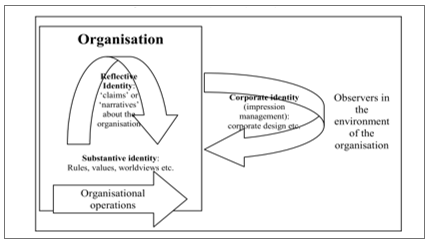Technology, self-identity and organisational profits

Who am I?” and “What makes me, me? are questions that have enchanted humans since the dawn of time. Successful organisations are those that are able to convince their consumers that their products or services enhance the consumers personal identity and extended-self (external portrayal of self-identity) (Belk, 1988). Never has it been more important for organisations to understand the identity forming mechanisms of their consumers given that identity portrayals in our post-millennial world occur not just in the physical world but also in the virtual world.
The advent of the internet has expanded the extended-self manifestation to the Virtual world, with people creating multiple identities through Avatars, role-playing games like World of Warcraft or Second Life (Belk, 2013, 2014) where people can ‘own’ possessions like real-estate, clothing and furniture to create a sense-of-self. On the other end of the spectrum, experiencing and nurturing nature to create a sense-of-self has shown to foster responsible behaviour, a sense of ethics, and a moral lens that at times looks negatively on a society where the concept of an extended-self is communicated through possessions, be it virtual or physical (Belk, 1988; Kunchamboo, Lee, & Brace-Govan, 2017; Ozcaglar-Toulouse, 2007). Experiencing nature without the peripheral comforts of modern possessions has shown to create a sense of community and an increased sense-of-self (Arnould & Price, 1993). This dichotomy between the prevalent me-mine-extended-self thought and the back-to-simplicity-extended-self which is gaining prominence in this contemporary 21st century world, is something that organisations need to understand so they can cater their products and services appropriately to their consumers. For instance, how a company promotes something as simple and everyday as toilet-paper or clothing can differ dependent on who the consumer is.
Technology platforms can play a vital role within organisations to personalise the consumer experience of various heterogenous consumers whether it is through the look and feel or the operational ability of a company’s technology platforms. Through the company’s technology platforms and QR codes a company may be able to take the consumer on virtual journey from raw materials to products thereby personalising their journey.
Who are your consumers and how do you currently use your technology platforms to optimise customer experience?
References:
- Arnould, E. J., & Price, L. L. (1993). River Magic: Extraordinary Experience and the Extended Service Encounter. Journal of Consumer Research, 20(1), 24-45.
- Belk, R. (1988). Possessions and the Extended Self. Journal of Consumer Research, 15(2), 139-168. doi:10.1086/209154
- Belk, R. (2013). Extended Self in a Digital World. Journal of Consumer Research, 40(3), 477-500. doi:10.1086/671052
- Belk, R. (2014). Digital consumption and the Extended Self. Journal of Marketing Management, 30(11-12), 1101-1118. doi:10.1080/0267257x.2014.939217
- Kunchamboo, V., Lee, C. K. C., & Brace-Govan, J. (2017). Nature as Extended-Self: Sacred Nature Relationship and Implications for Responsible Consumption Behavior. Journal of Business Research, 74, 126-132. doi:10.1016/j.jbusres.2016.10.023
- Ozcaglar-Toulouse, N. (2007). Living for “Ethics”: Responsible Consumption in Everyday Life. Consumer Culture Theory, 11, 421-436. doi:10.1016/S0885-2111(06)11017-0




Responses